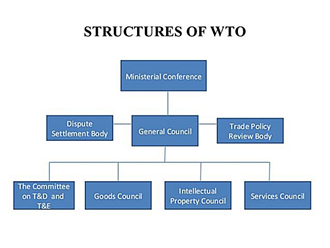India happens to be one of the largest producers of most of the agricultural products in the world but ranks very low in terms of yield. For example, India has the largest area under cultivation of rice and wheat and India is the second largest producer of these crops. However, in terms of productivity, its rank is only 52nd in the world in rice and 38th in wheat.
Not only is productivity of Indian agriculture lower than many countries, but it is also much lower that the potential productivity which can be achieved.
Causes of low agricultural productivity
1. Uneconomic landholding: According to National Sample Survey 2015-16, 86 percent of total land holdings in India are small and marginal (which is less than 2 hectares of land each). To add to that, these land holdings are fragmented into number of tiny plots which renders use of capital-intensive agriculture ineffective and hence, there is low yield from those farmlands.
2. High population pressure: There is heavy pressure of population on land. Moreover, because of lesser employment avenues in other sectors, too many people are engaged in farming than required. This leads to marginal productivity of labour turning to zero which is a case of disguised unemployment.
3. Land Degradation: Due to various factors which include overuse of fertilisers, wind and soil erosion, deforestation, increased soil salinity due to overuse of groundwater, almost 40 percent of land in India suffers from degradation. Most of the states have witnessed land degradation in the past two decades.
4. Inadequate irrigation facilities: As per the latest data by NITI Aayog, 55 percent of gross cropped area of about 200 million hectares are irrigated. This means that still 45 percent of those areas are dependent on monsoon for water to farms. Moreover, due to climate change, monsoon has become rather erratic with lesser temporal distribution of rainfall which reduces the water use capacity of farmlands. This lowers the overall productivity of agriculture in India.
5. Outdated agricultural techniques: Since majority of small and marginal farmers practice subsistence agriculture, they employ primitive tools and techniques which reduces the yield from farms.
6. Lack of institutional credit: Due to lack of availability of formal sources of credit, the cost of production in agriculture is higher. This dissuades farmers from adopting modern farming methods which requires capital investment. Thus, levels of productivity on land and per cultivator remain low.
Measures to increase production and productivity
1. Implementation of land reforms: Although there has been land reforms exercise in the past, still there is a room for strict enforcement of legislation. This will create efficiencies in agriculture wherein redistribution of land may make certain small patches of land an economically viable units of production.
2. Integrated land management: There is a need for integrated soil and water management to restore the natural fertility of soil.
3. Procurement of quality inputs: Improved seeds can play a significant role in improving productivity. Moreover, it also increases the efficacy of other inputs like fertilisers and irrigation. Similarly, adequate and judicious fertiliser uptake can help achieve higher productivity.
4. Higher coverage of irrigation facilities: Improved coverage of irrigation towards potential levels is one such contributing factor for productivity. There is a need to improve irrigation networks particularly in eastern and central
5. Higher cropping intensity: More area under multiple cropping increases the yield per unit net area. There is a considerable scope of increasing area under double cropping particularly in Andhra Pradesh, Gujarat, Maharashtra etc.
6. Provision of credit and marketing facilities: There is a need for more flow of formal credit in agriculture and allied sector. This would help in capital investments and other accumulation of capital in agriculture sector. For example, cheaper farm mechanisation loan rates would prompt farmers to buy those goods. Similarly, there is a need to promote cooperatisation of small and marginal farmers through farmers producer organisations (FPOs).
7. Agricultural Research: Research should be conducted on a wider scale and that too in various domains of agricultural inputs like better quality fertilisers, high-yield and disease-tolerant seeds, improvement in agricultural implements, better land and soil management etc.
Spread the Word


